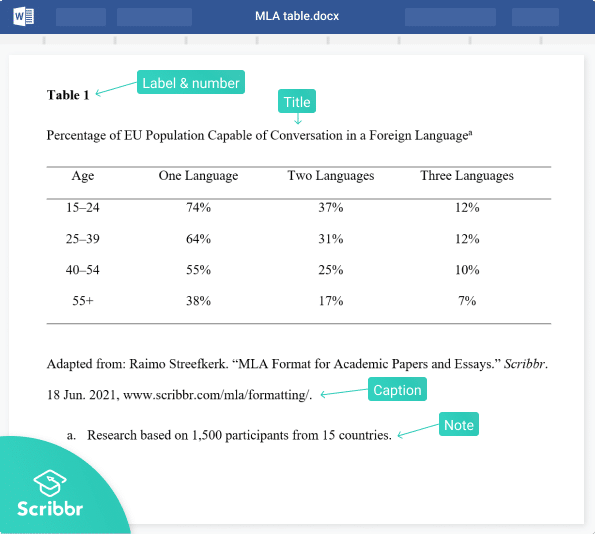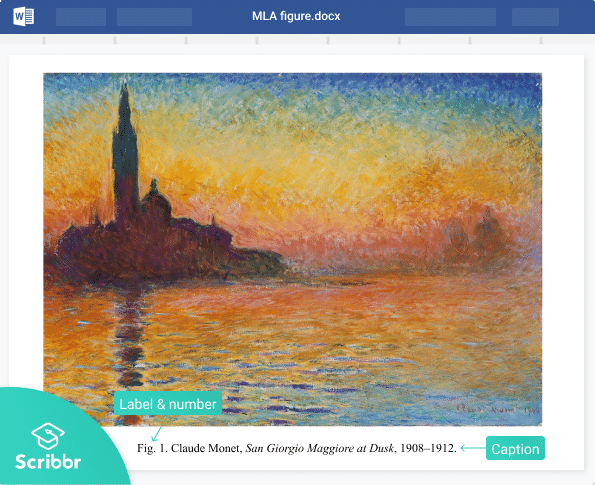MLA Format | Complete Guidelines & Free Template
The MLA Handbook provides guidelines for creating MLA citations and formatting academic papers. This quick guide will help you set up your MLA format paper in no time.
Start by applying these MLA format guidelines to your document:
- Times New Roman 12
- 1″ page margins
- Double line spacing
- ½” indent for new paragraphs
- Title case capitalization for headings
Download Word templateOpen Google Docs template
(To use the Google Docs template, copy the file to your Drive by clicking on ‘file’ > ‘Make a copy’)
How to set up MLA format in Google Docs
Header and title
The header in MLA format is left-aligned on the first page of your paper. It includes
- Your full name
- Your instructor’s or supervisor’s name
- The course name or number
- The due date of the assignment
After the MLA header, press ENTER once and type your paper title. Center the title and don’t forget to apply title-case capitalization. Read our article on writing strong titles that are informative, striking and appropriate.
For a paper with multiple authors, it’s better to use a separate title page instead.
Running head
At the top of every page, including the first page, you need to include your last name and the page number. This is called the “running head.” Follow these steps to set up the MLA running head in your Word or Google Docs document:
- Double-click at the top of a page
- Type your last name
- Insert automatic page numbering
- Align the content to the right
The running head should look like this:
Works Cited page
The Works Cited list is included on a separate page at the end of your paper. You list all the sources you referenced in your paper in alphabetical order. Don’t include sources that weren’t cited in the paper, except potentially in an MLA annotated bibliography assignment.
Place the title “Works Cited” in the center at the top of the page. After the title, press ENTER once and insert your MLA references.
If a reference entry is longer than one line, each line after the first should be indented ½ inch (called a hanging indent). All entries are double spaced, just like the rest of the text.
Creating MLA Style citations
Scribbr’s free MLA Citation Generator can help you cite your sources in MLA Style. All you need is the website URL, book ISBN, or journal article DOI, and the citation generator does the rest.
Generate accurate MLA citations with Scribbr
Prefer to cite your sources manually? Use the interactive example below to see what the Works Cited entry and MLA in-text citation look like for different source types.
Headings and subheadings
Headings and subheadings are not mandatory, but they can help you organize and structure your paper, especially in longer assignments.
MLA has only a few formatting requirements for headings. They should
- Be written in title case
- Be left-aligned
- Not end in a period
We recommend keeping the font and size the same as the body text and applying title case capitalization. In general, boldface indicates greater prominence, while italics are appropriate for subordinate headings.
Chapter Title
Section Heading
Subheading
Tip: Both Google Docs and Microsoft Word allow you to create heading levels that help you to keep your headings consistent.
Tables and figures
Tables and other illustrations (referred to as “figures”) should be placed as close to the relevant part of text as possible. MLA also provides guidelines for presenting them.
MLA format for tables
Tables are labeled and numbered, along with a descriptive title. The label and title are placed above the table on separate lines; the label and number appear in bold.
A caption providing information about the source appears below the table; you don’t need one if the table is your own work.
Below this, any explanatory notes appear, marked on the relevant part of the table with a superscript letter. The first line of each note is indented; your word processor should apply this formatting automatically.
Just like in the rest of the paper, the text is double spaced and you should use title case capitalization for the title (but not for the caption or notes).
MLA format for figures
Figures (any image included in your paper that isn’t a table) are also labeled and numbered, but here, this is integrated into the caption below the image. The caption in this case is also centered.
The label “Figure” is abbreviated to “Fig.” and followed by the figure number and a period. The rest of the caption gives either full source information, or (as in the example here) just basic descriptive information about the image (author, title, publication year).
Source information in table and figure captions
If the caption of your table or figure includes full source information and that source is not otherwise cited in the text, you don’t need to include it in your Works Cited list.
Give full source information in a caption in the same format as you would in the Works Cited list, but without inverting the author name (i.e. John Smith, not Smith, John).
But if the caption just gives basic information (like the figure example above), you do need to include a Works Cited entry for that source. In this case, make sure the caption contains at least enough information—author and (abbreviated) title—to point the reader to the relevant Works Cited entry.
Frequently asked questions about MLA format
- What font and size is used in MLA format?
-
MLA recommends using 12-point Times New Roman, since it’s easy to read and installed on every computer. Other standard fonts such as Arial or Georgia are also acceptable. If in doubt, check with your supervisor which font you should be using.
- How do I format a paper in MLA style?
-
The main guidelines for formatting a paper in MLA style are as follows:
- Use an easily readable font like 12 pt Times New Roman
- Set 1 inch page margins
- Apply double line spacing
- Include a four-line MLA heading on the first page
- Center the paper’s title
- Indent every new paragraph ½ inch
- Use title case capitalization for headings
- Cite your sources with MLA in-text citations
- List all sources cited on a Works Cited page at the end
- What is the easiest way to create MLA citations?
-
The fastest and most accurate way to create MLA citations is by using Scribbr’s MLA Citation Generator.
Search by book title, page URL, or journal DOI to automatically generate flawless citations, or cite manually using the simple citation forms.
- What is the most recent edition of the MLA Handbook?
-
The MLA Handbook is currently in its 9th edition, published in 2021.
This quick guide to MLA style explains the latest guidelines for citing sources and formatting papers according to MLA.
- Do I need a title page for my MLA paper?
-
Usually, no title page is needed in an MLA paper. A header is generally included at the top of the first page instead. The exceptions are when:
- Your instructor requires one, or
- Your paper is a group project
In those cases, you should use a title page instead of a header, listing the same information but on a separate page.
Cite this Scribbr article
If you want to cite this source, you can copy and paste the citation or click the “Cite this Scribbr article” button to automatically add the citation to our free Citation Generator.
Streefkerk, R. (2022, June 16). MLA Format | Complete Guidelines & Free Template. Scribbr. Retrieved January 9, 2024, from https://www.scribbr.com/mla/formatting/




